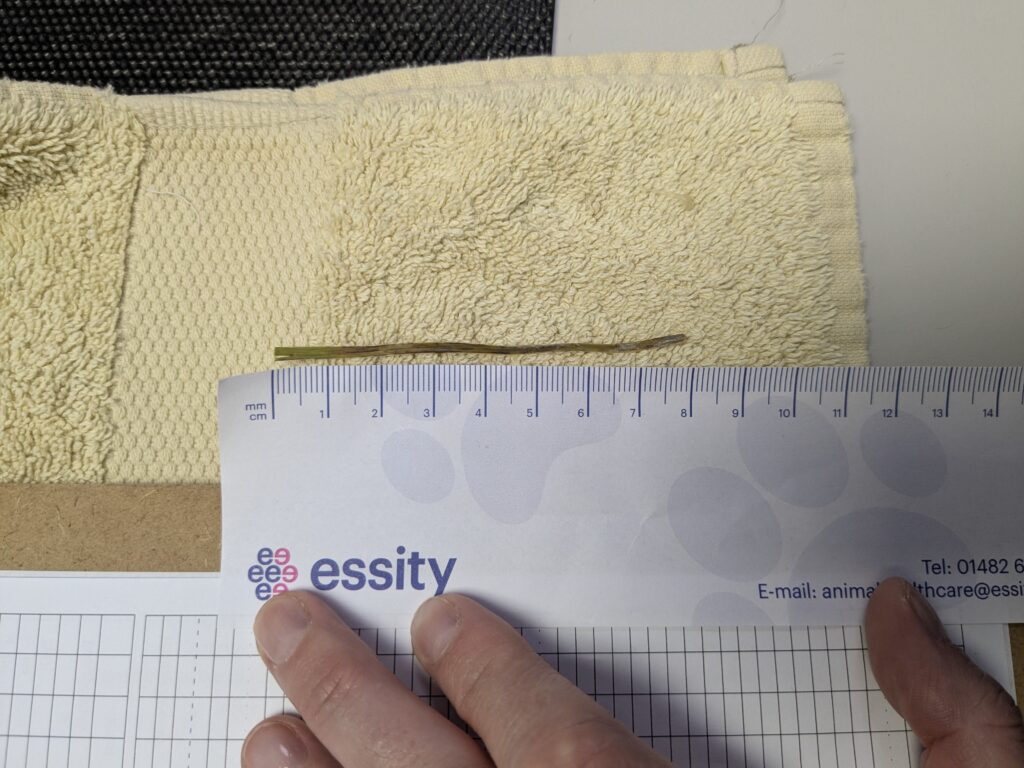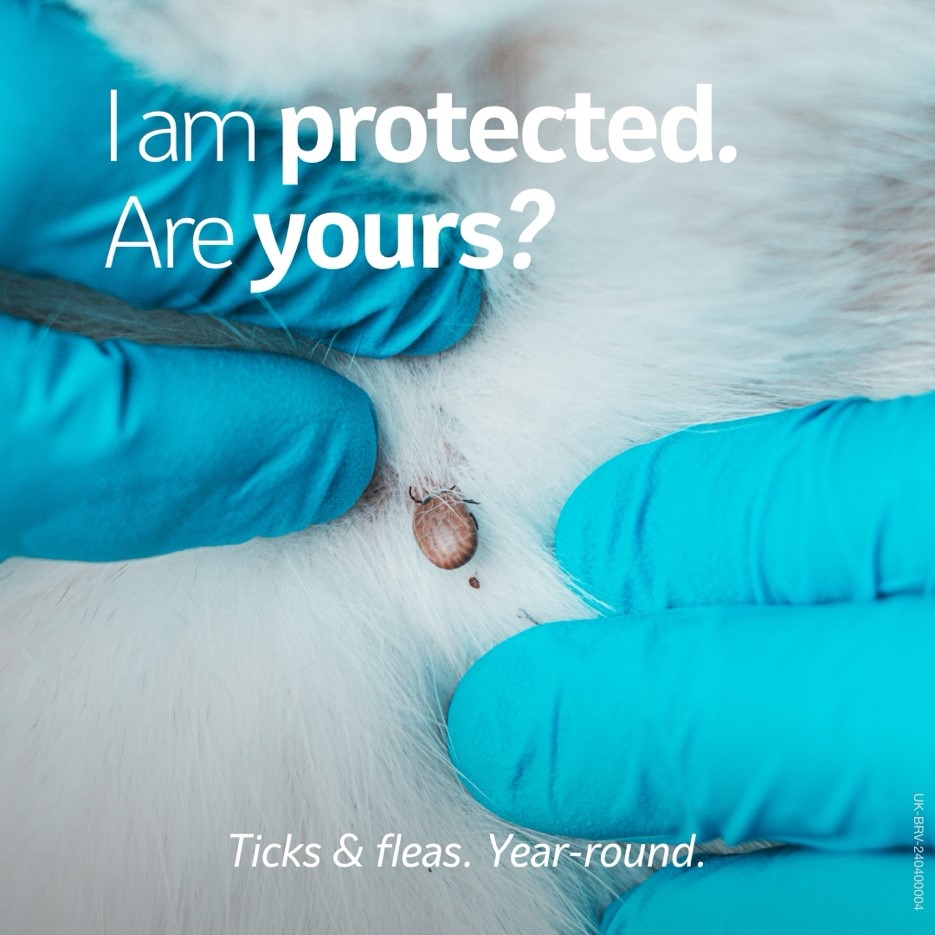Simba is a 3-year-old ginger and white mischievous cat who got himself into a bit of trouble eating grass at the end of last year! Simba is a lovely boy who was hand-
reared by his owner from 3 weeks old along with his two other brothers and has been coming to see us at Hollybank since his first vaccinations.
He came to see us after suddenly starting coughing and gulping. This could have been caused by many things, such as irritation in the throat, feline asthma, a hairball, or a nasal foreign body. In the first instance, the vet and Simba’s owner agreed to try treating him with an anti-inflammatory to see if the cough would resolve. He did improve on the medication, but his symptoms then changed, and Simba started sneezing.
We decided to sedate him to explore the back of his nose and throat for any foreign body. Once Simba was sedated, an 8cm long grass blade was found! This was stuck at the back of his nasal cavity behind his soft palate.
Grass blades often get lodged here when a cat is eating grass as the rough barbs will catch at the back of the throat. Cats may retch, sneeze, cough or gulp. Sometimes these signs are constant, or they may just be when eating. Some cats may be inappetent or have nasal discharge.
Once the offending grass blade was removed, Simba returned to being his usual cuddly affectionate self, following his mum around and chirping away!
Well done Simba for being out ‘Brave Pet of the Month!’







